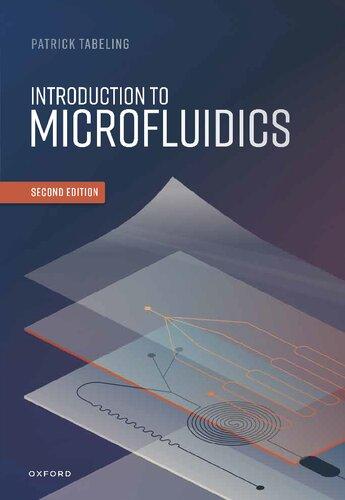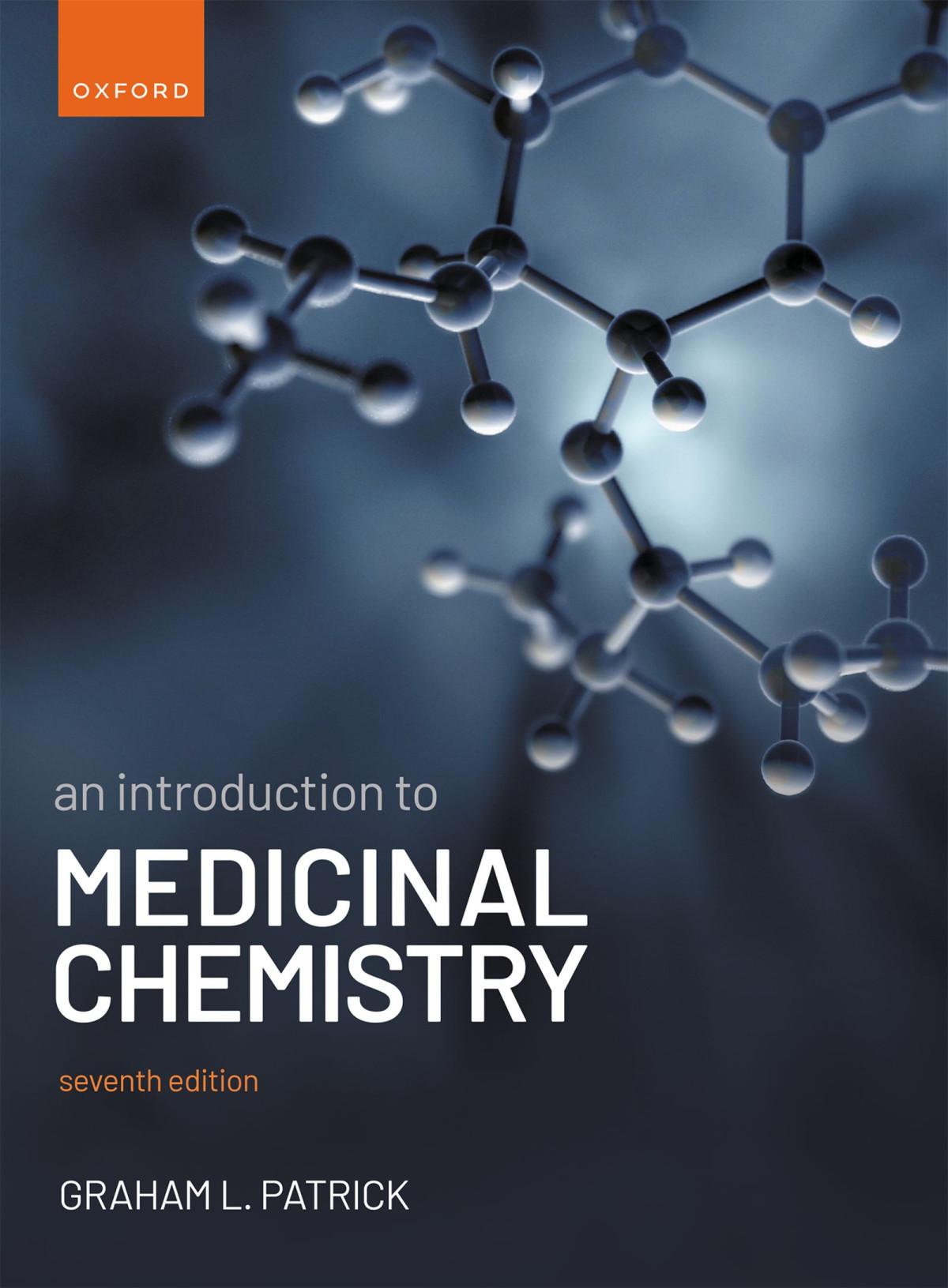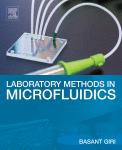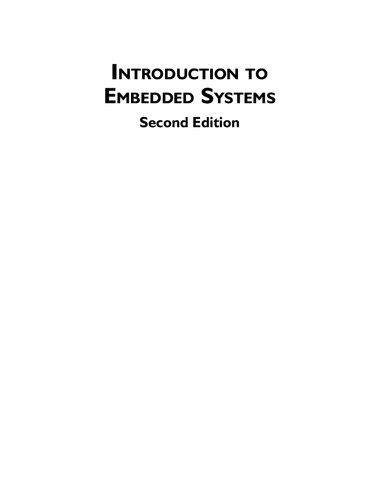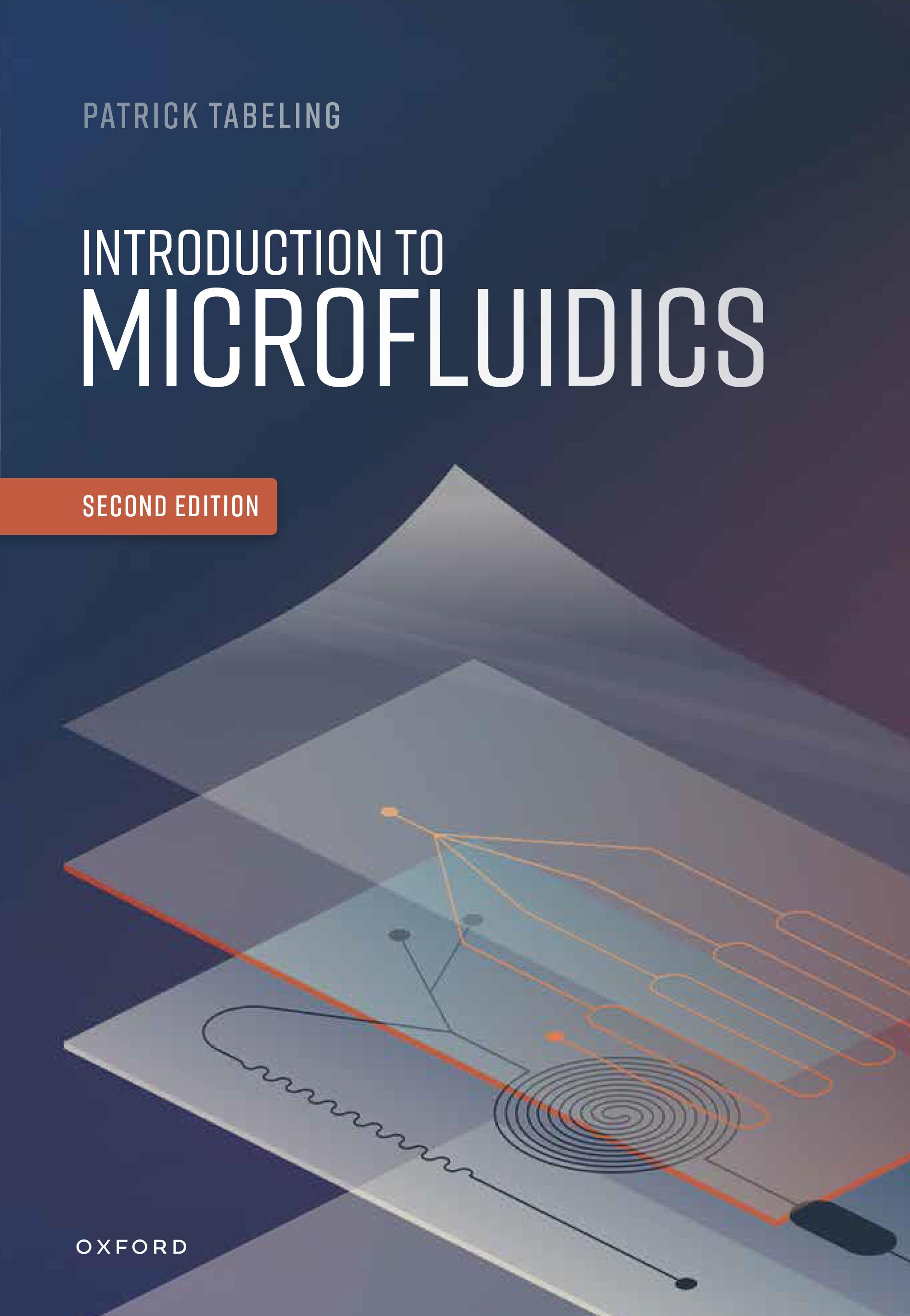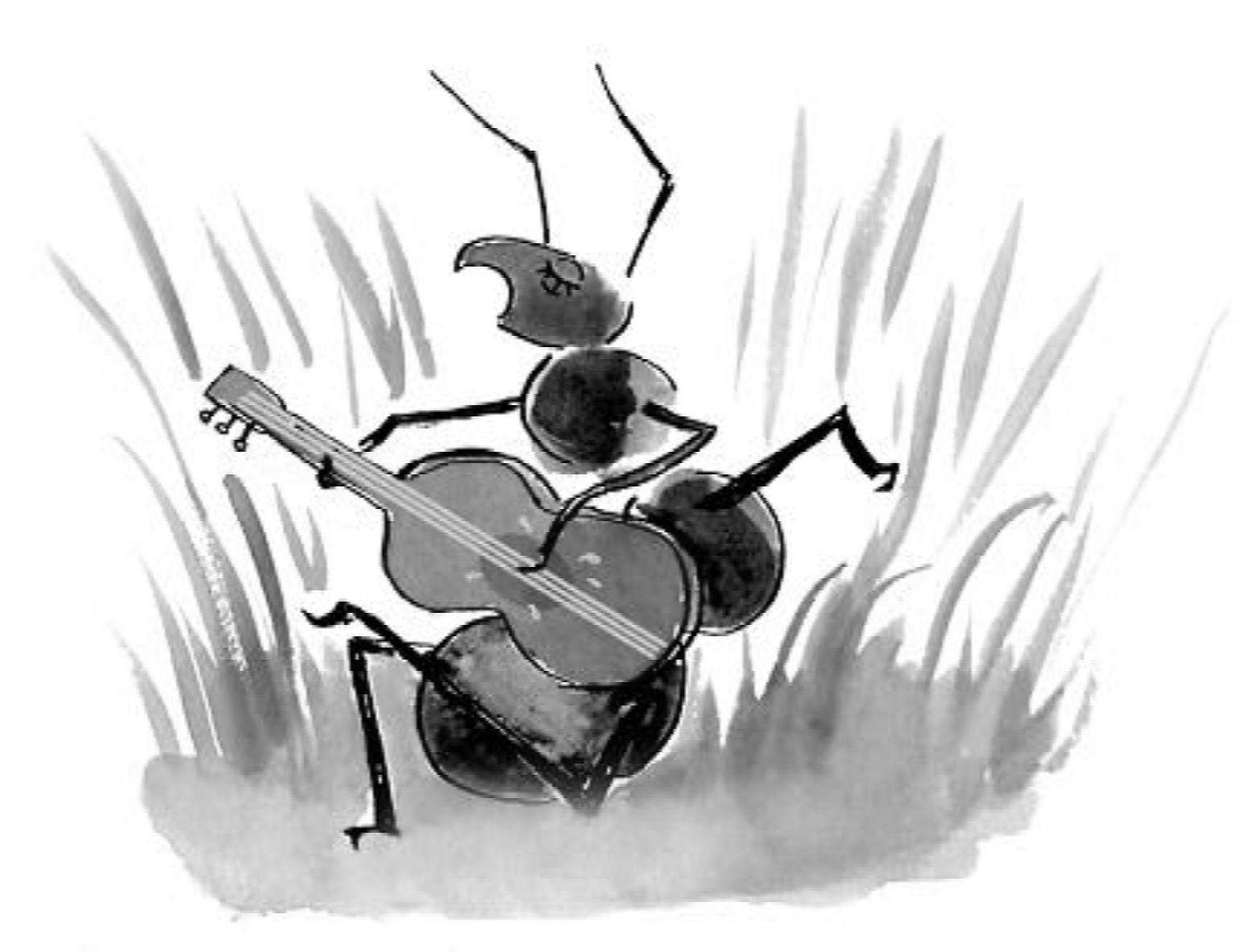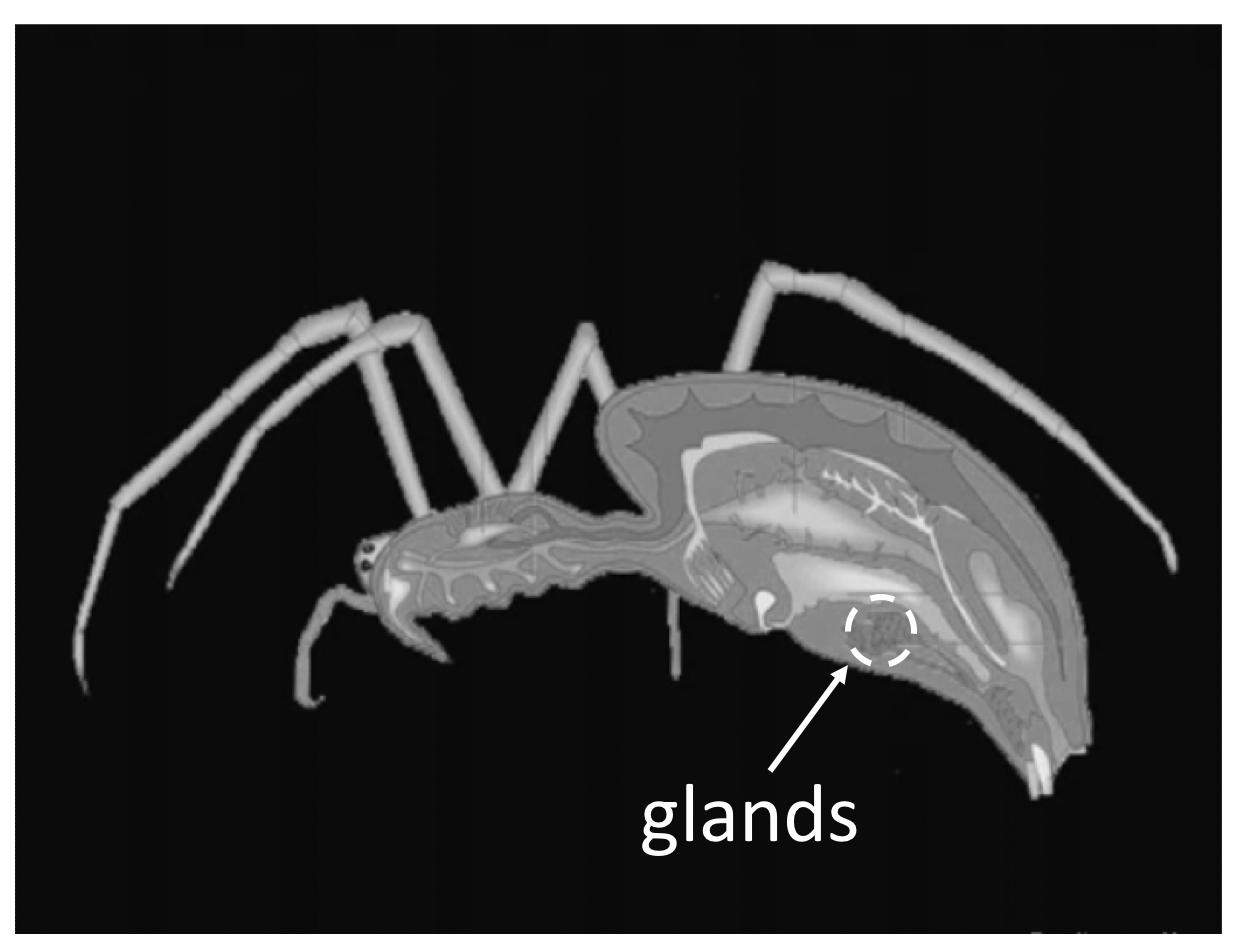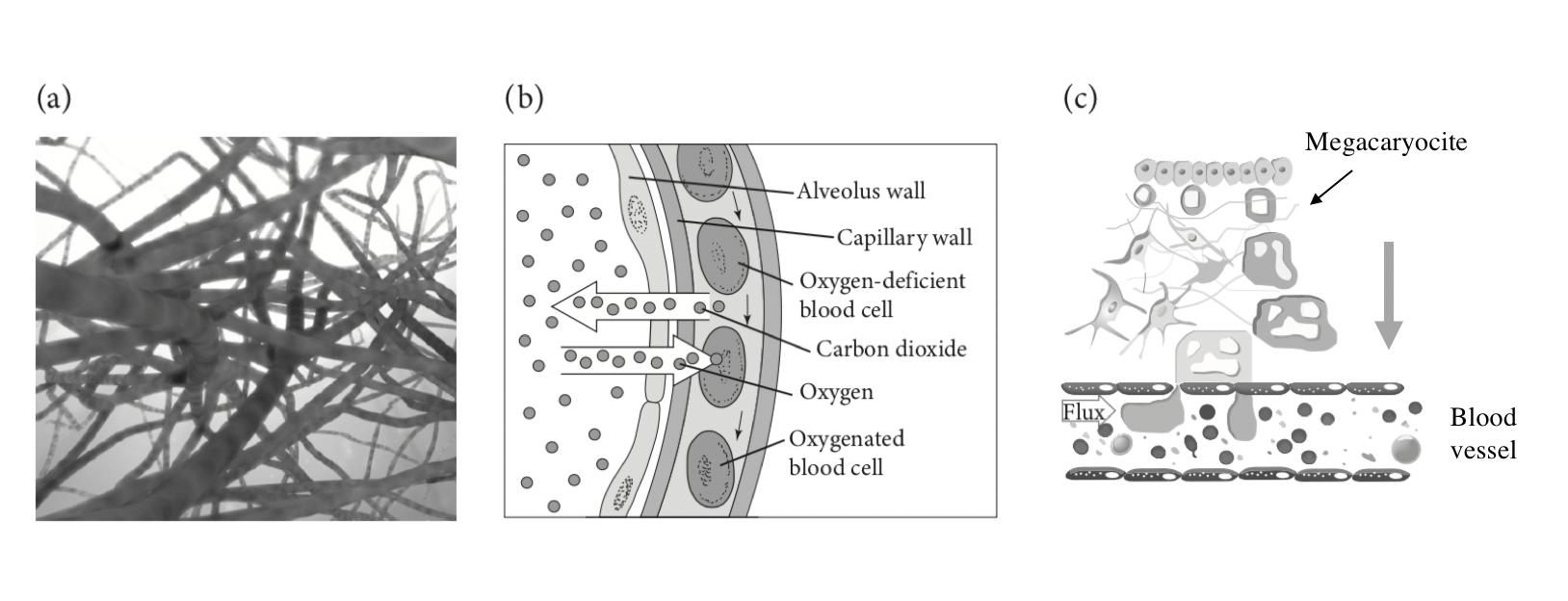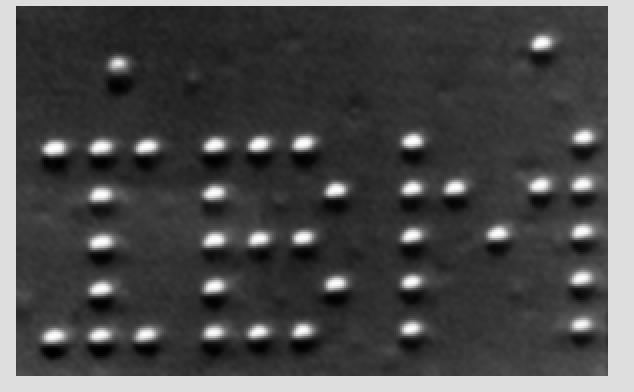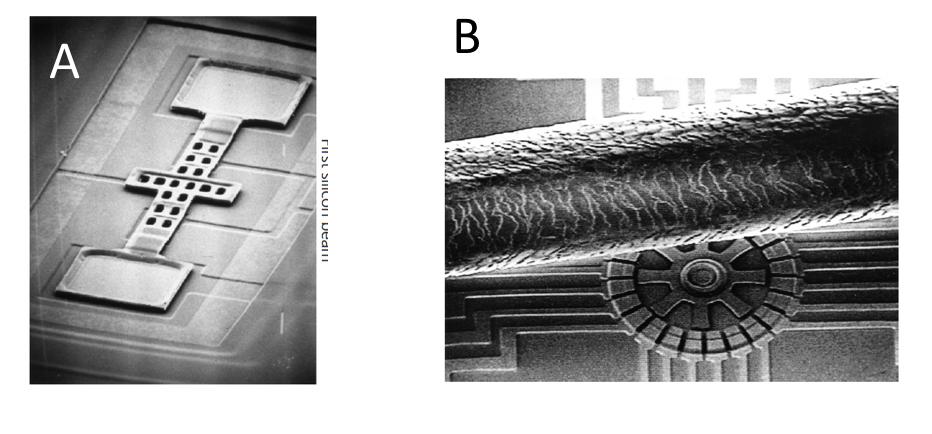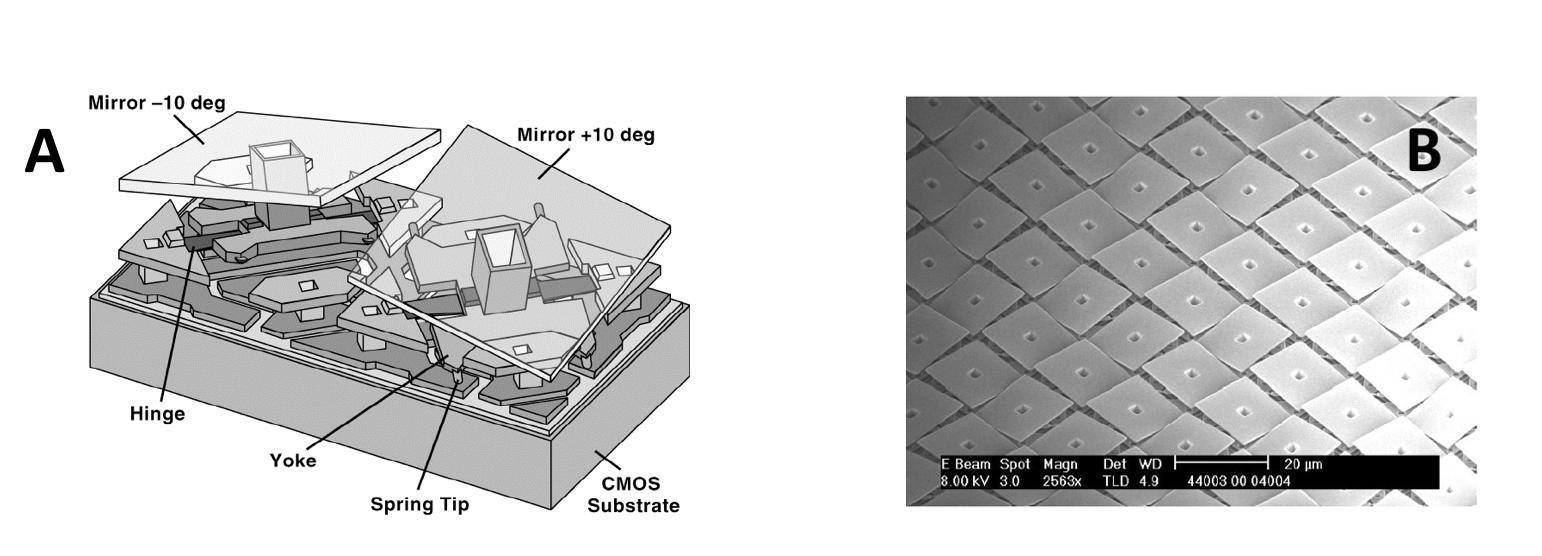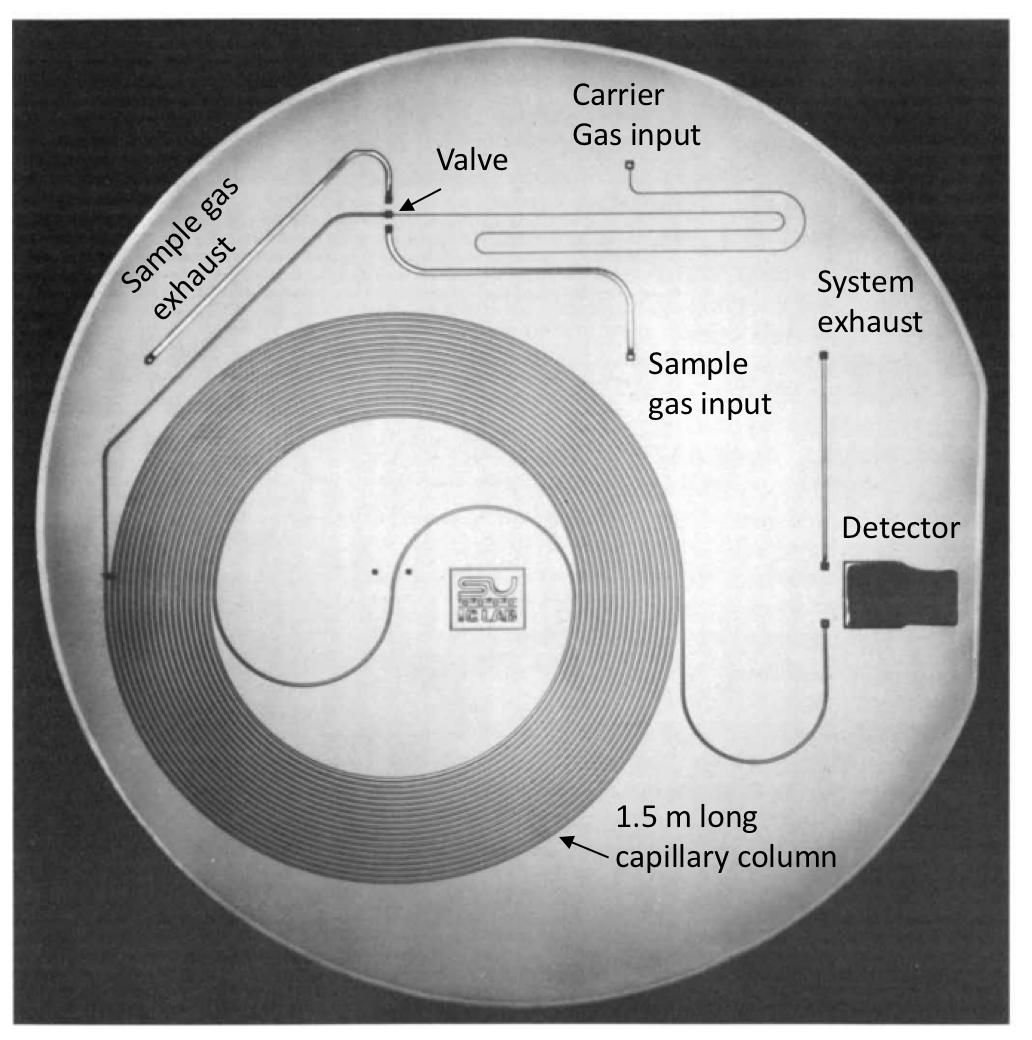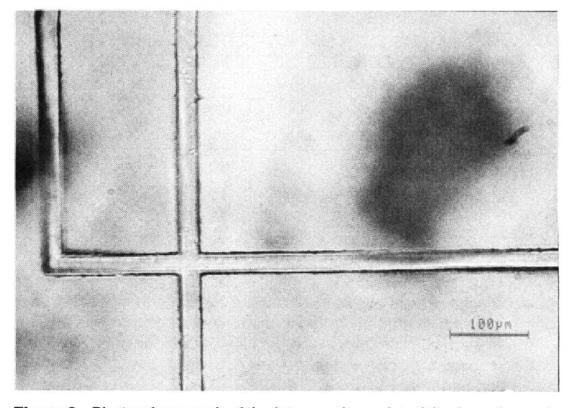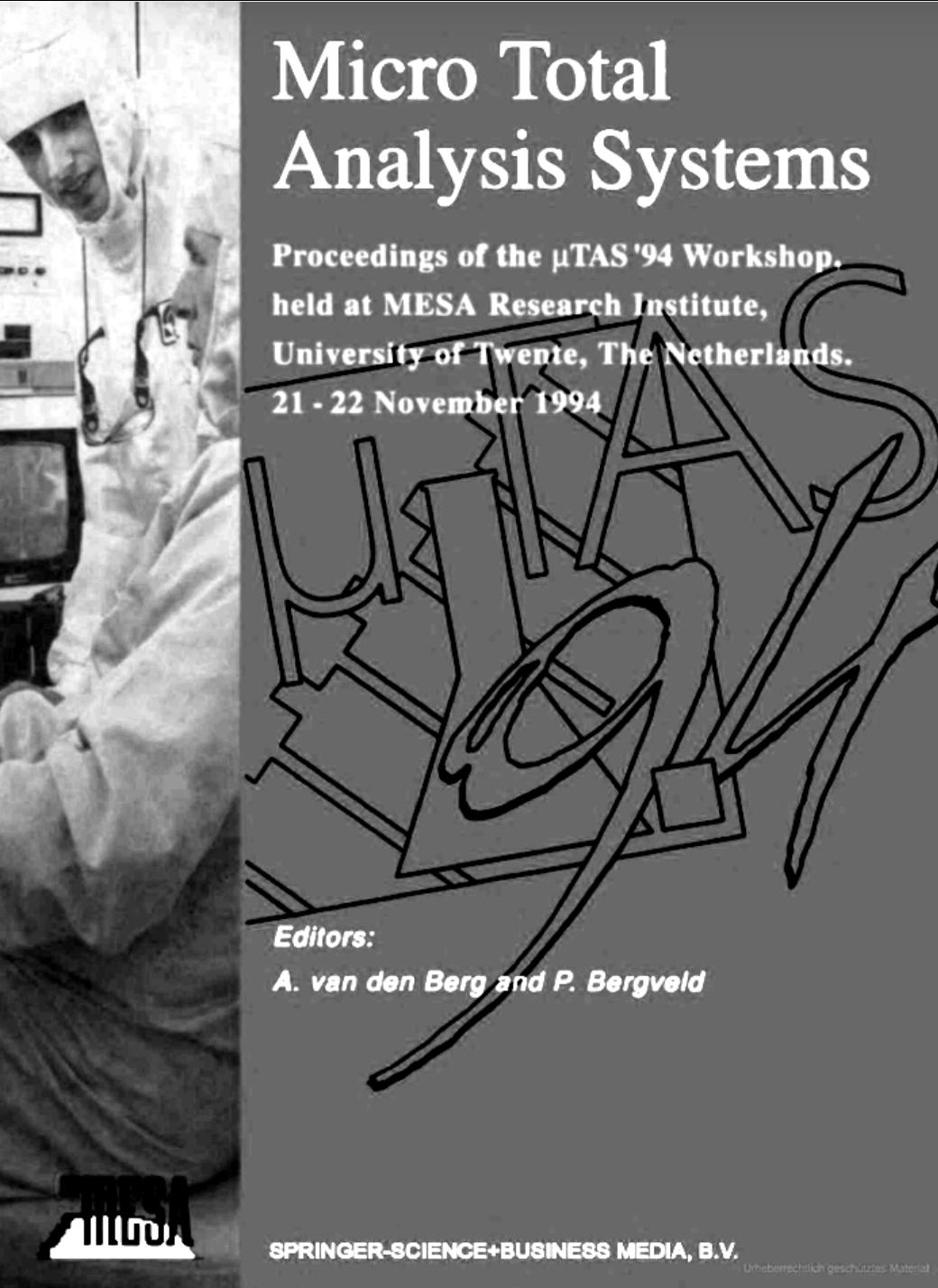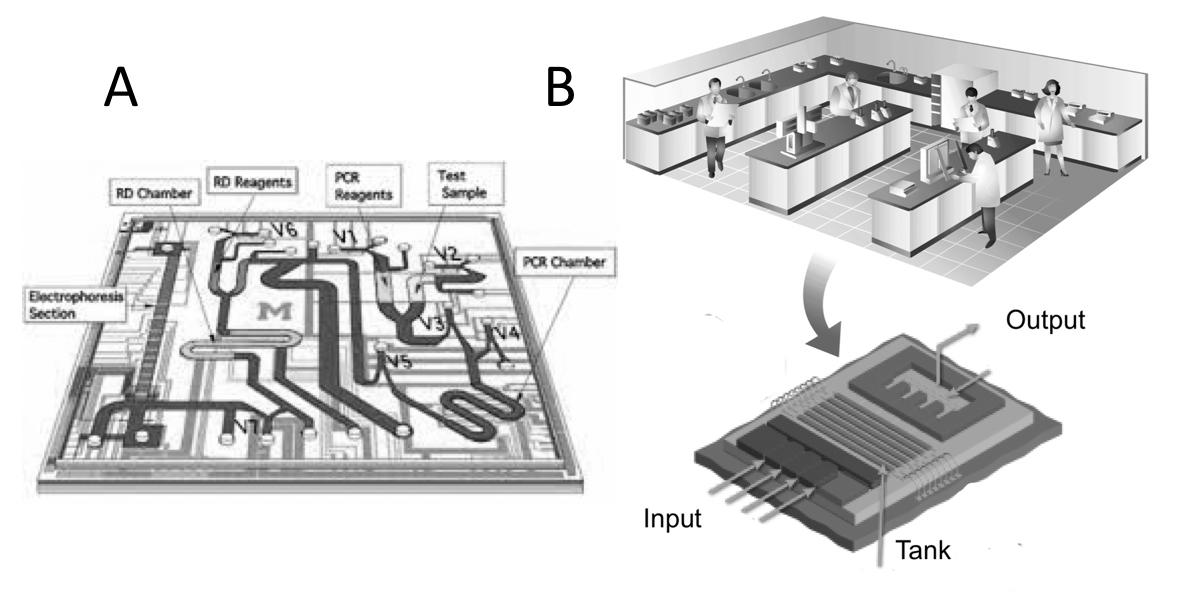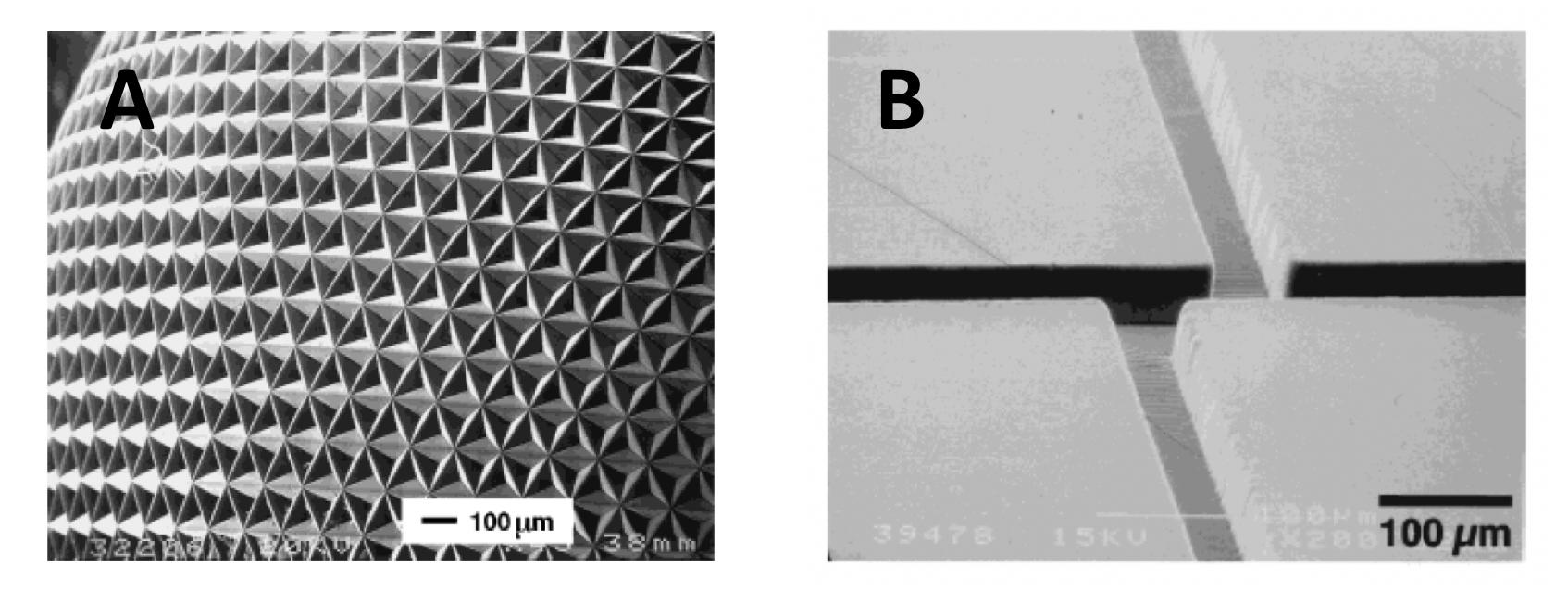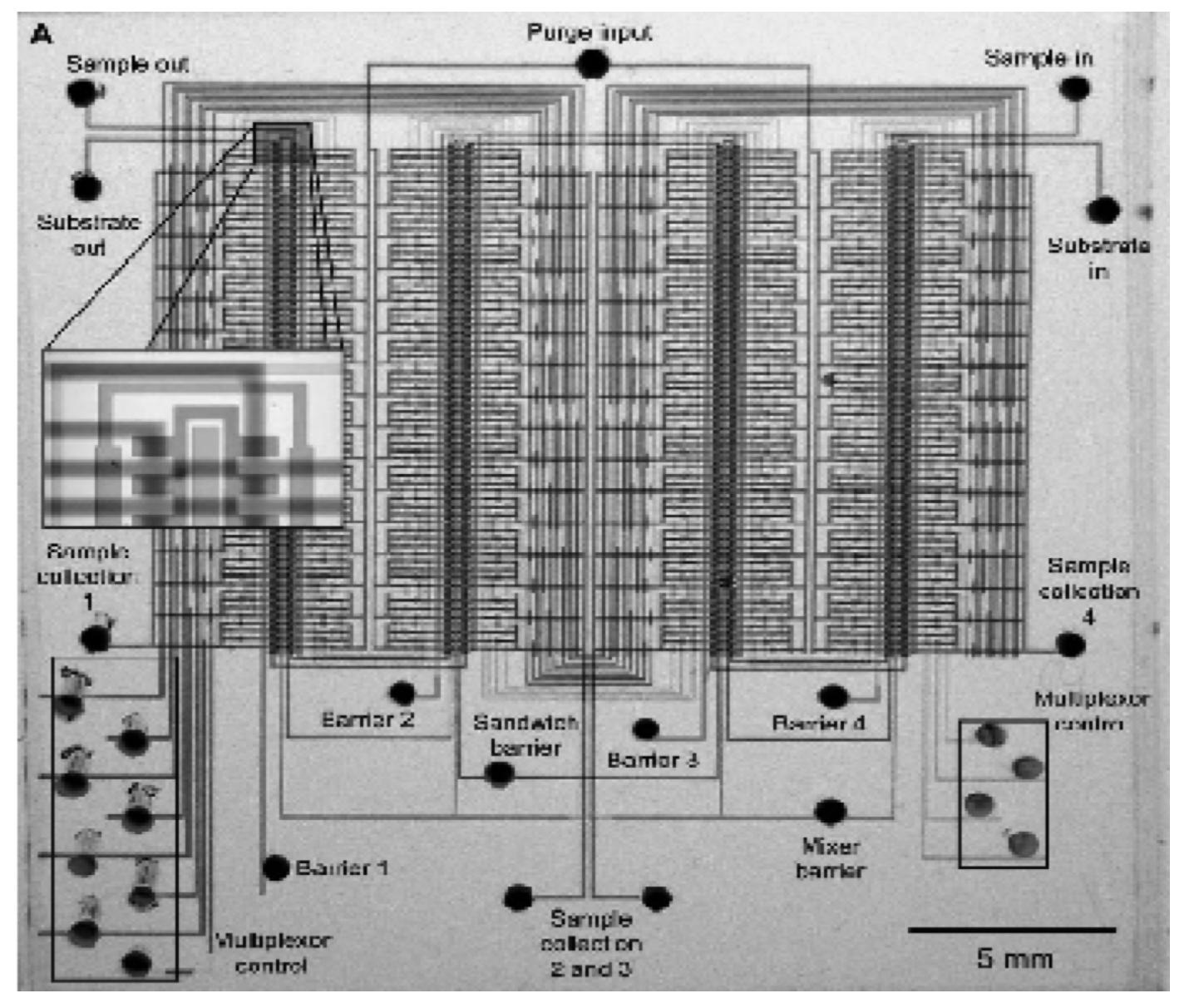Preface
Microfluidicshasprogressedconsiderablyoverthelasttwentyyears,andthetimehas cometoenvisageaseriousupdateofthefirsteditionof IntroductiontoMicrofluidics, publishedin2005.Infact,thissecondeditionismorethananupdate.Compared tothefirstone,itkeepsthesamestructure,thesamespirit,thesameattemptsto explainthings,onaphysicalbasis,indepthandsimply,wheneverpossible,butitisnot reducibletoanupdate.Thepresenteditionresultsfromcompleterewritingofthefirst one,nurturedbytheconsiderableamountofinformationcollectedinthefieldoverthe lasttwodecades.Somuchinformationhasbeengatheredintwentyyears.Somany revisionsofthevisionsofthefieldhavebeenmade.Thingsthatlookedimpossible inthe1990sgaverisetoanimportantindustry,tenyearslater.Thisisthecaseof nextgenerationsequencing(NGS).Thingsthatlookedrevolutionaryturnedoutto bedisappointing.Thehistoryofmicrofluidicsisfullofdreamsthatbecamerealand appealingevidencethatbecamewrong.Letusreturntotheturnofthecentury.Atthat time,themicrofluidicmarket(i.e.withoutinkjetprinting)wassmall,andscepticism wasfloatingaroundconcerningthepotentialofthetechnologytofinditsfeetina market,eventhoughitwasregularlyannounced,hereandthere,thatmicrofluidics wouldrevolutionarizethetwenty-firstcentury.Commonsenseledtothetheory,infact wrong,thatdrivingflowsthroughtinychannels,atanindustrialscale,withoutleaks, clogging,bubbles,oruncontrolledadsorption,wasimpossible.Theoppositeviewpoint believingthatitisstraightforwardtocreateacomplex,functional,microfluidicdevice wasunrealistic.Still,successfulmicrofluidicproductsemerged,while,inthemeantime, thetechnologypenetratedintoanincreasingnumberofnewdomains.Themarket steadilyincreasedatatwo-digitrate,reaching,today,seventeenbillionsdollars.At themoment,hundredsofmillionsofdevicesaresoldeveryyear.Forexample,1.2 millionIlluminamicrofluidicflowcells,forgenesequencing,areshippedeverysingle year.Inthemeantime,fundamentalphenomena,suchascapillarity,wetting,slippage, andnanofluidictransporthavebeenbetterunderstoodor,inanumberofpuzzling cases,justunderstood.Overtheyears,theearlyvisionofthedomain,basedona strictanalogywithmicroelectronics,graduallyshiftedtoanewparadigm,inwhichthe microfluidictoolboxisnolongerrestrictedtoMOS-FETsurrogates,butincorporates amuchbroaderpaletteofmaterialsandmechanisms.
Sincethefirstedition,twentybooksonmicrofluidicshavebeenpublished.Manyare goodorverygood.Butsomelookmorelikegalleriesofcartoonsexhibitingsystems supposedtowork,withnodatashowingthattheydo.Thisisastyle.Itriedtoavoid thistypeofpresentation.Otherbooks,oftenengineering-oriented,describebasicphenomenawithoutmuchdepth.Infact,caricaturingsubtlemechanismsisadifficult exercise.Sometimes,errorsaremade.Perhaps,wecouldcontentourselveswiththis
viii Preface
levelofdescription.Afterall,wecanuseacomputerwithnoideahowatransistor works.AsP.Andersonstated,scienceisorganizedinhierarchicallevels,builtontop ofeachother,theupperusingconceptselaboratedbythelower.Bothoperateindependently,elaboratingtheirownlawsandparadigms.Then,asjustsaid,computing researchersdonotneedtoknowwhatatransistoris,andthereisnonecessityfor fluidmechaniciststounderstandkinetictheoryofgases.Inthe1990s,itwasthought thatsoon,microfluidicresearcherswouldnolongerneedfluidmechanics.Engineers woulddesignmicrofluidicmachines,withoutnoticingthatfluidsarerunninginthem. Perhaps,oneday,microfluidicswillreachthisstage.Butmicrofluidicshasnotreached thislevelyet.Anditisstillvaluableandprobablyimportant,toacquireaminimal knowledgeonthesubtletiesthatthefieldreliesupon,atleasttoknowthelimitations thattheyinduce.Iattemptedtoprovidethistypeofknowledgethroughoutthisbook.
Manycalculationsdevelopedinthepresentbookareelementary.Still,theyallowus torationalizemostofthephysicsinvolvedinmicrofluidicflowandtransportphenomena.Physico–chemicalprocesses,developingonsurfacesorinbulks,soimportantin microfluidics,areexplainedonanintuitivebasis,withoutusingthepowerfulmachineryofthermodynamics,whoseexquisiteconceptssometimesobscuretheunderpinningphysics.Emphasisisplacedonmodernapplications,inwhichbiologyplaysan importantpart.Also,asinthefirstedition,aforty-pageintroductiontomicrofluidic technologiesisgiven.Thebookincludesenoughmaterialtobuildupcoursesofvarious formats,fromafewtotwentyhoursorso.
Fig.0.1: Antplayingmicroguitar(FromM.Seiffert(2003)).
Acknowledgements
First,IwouldliketothankC.M.Ho,whohostedmein2000,attheUniversityof CaliforniaatLosAngeles(UCLA),atthetimewhenthe’goldenyears’ofmicrofluidics werejustlaunching.Thankstohim,Idiscoveredthefield.OnmyreturntoParis, oneyearlater,P.G.DeGennesofferedmetocreateamicrofluidiclaboratoryat EcoleSup´erieuredeChimieIndustrielle(ESPCI),whichIdidwithenthusiasm.Since then,fortwentyyears,Ihavehadthechancetomeetextraordinarypeople,students, postdocs,andcolleagues,andtobuildstrongfriendships.Writingthesecondedition isasortofnoeticjourneythroughtheseexcitingyears.
Microfluidicsisabroadfield,anditisimpossibletobecome,allofasudden,aworld classexpertonallthesubjectsitembraces.Iwasfortunatetoreceivehelpfrommany colleagues,whokindlyexchangedcorrespondanceand,inmanycases,correctederrors andmisconceptions.IacknowledgeJ.Ottino,whomadenumerousremarksonthe chaoticmixingsection.InthestrangeatmosphereoftheCOVIDconfinementdays,we hadlongexchangesovertheinternet,evoking,sometimes,theyearswhenwepertained tothesamecommunity.Thislefttheimpressionthatwritingabookisalsoalook intothepast,sometimesexposingtheauthortovertigo.Ihadthesamefeelingswith myfriendsY.Pomeau,andJ.P.Bouchaud,fortheirremarksconcerningBrownian motionandchaos,andK.MoffattforhiscommentsonBatchelor’sapproachtofluid mechanics.IhaddiscussionswithG.WhitesidesandA.Manzconcerningmicrofluidics, itspastandfuture.J.EijkelsandA.vandenBergexpressedtheirenlighteningvision ofnanofluidicswhichIrefertointhebook.D.LohseupdatedthepoorknowledgeIhad onnanobubbles,H.StonemadeadetailedreadingofmypresentationoftheNavierStokesequations,F.MugelegavepreciousremarksonelectrowettingandJ.Cossyon surfactantchemistry.WithmyfriendS.Quake,Ihadalongsemanticdisputeabout theword‘vesicle’,notendedyet.Z.Z.Li,aformerstudent,nowprofessoratBeijing InstituteofTechnology,performedexperimentstoobtaintheuseful(unpublished) imagesshowninChap4,relatedtostepemulsificationtechnique.Ialsobenefited fromgreatremarksfromD.Quere,J.O.Fossum,T.Lecuit,V.Hessel,J.LViovy, J.Eggers,M.Bazant,R.Ismagilov,P.Doyle,H.Bruus,A.Strooke,F.Wyart,E. Clement,A.Skjeltorp,E.Raphael,M.Tatoulian,Y.Tran,K.Jensen,S.Wereley,J. Bibette,A.GriffithsandD.Weitz.IalsoacknowledgeJ.MoulyandC.Midelet,from YoleDevelopment,fortheirexplanationsofthemicrofluidicmarket.DeepthankstoC. Rollard,forherdescriptionoftherealmofspiders.IamalsoindebtedtoJ.O.Fossum, E.Torino,P.A.Netti,forgreatdiscussionsandfortheirinvitationstosabbatical periodsatNordheimUniversityandtheItalianInstituteofTechnology,inNapoli.I wouldalsoliketoacknowledgeA.Libchaber,fromwhomIlearnedalot.Discussions withmyclosecolleagues,P.NgheandJ.McGrawwereinspiringandexchangesin mygroupprovidedasourceofthinkingandlearning:thankstoP.Garneret,E.Coz, E.Martin,U.Soysal,P.Nieckele,M.Russo,andI.Maimouni.Iamalsogratefulto M.DhunnooforherhelpandL.Dehove,forherappealingcoverandthegreatfigures showninthisbook.
Contents
1Introduction 1
1.1Astonishingmicrofluidicsystemsinnature1 1.2Exquisitemicrofluidiccontrolinthehumanbody3 1.3MEMS,themotherofmicrofluidics6 1.4Thebirthofmicrofluidics9 1.5Theadventofsofttechnology14 1.6Diversificationofthetechnologyandbroadeningoftheapplications16
1.7MicroReactionTechnology(MRT)21 1.8Nanofluidics22 1.9Themicrofluidicmarket26 1.10Futureofmicrofluidics30 1.11Reviewsandbooks38 1.12Organizationofthebook39
References 40
2Physicsatthemicroscale 48
2.1Thescalesofsmallthings48
2.2IntermolecularForces-basics58
2.3Nano-MicroandMillifluidics71 2.4Thephysicsofminiaturization73 2.5Scalinglawsinnature77
2.6Miniaturizationofelectrostaticsystems87
2.7Miniaturizationofelectromagneticsystems91
2.8Miniaturizationofmechanicalsystems-thevibratingmicrobeam93 2.9Miniaturizationofthermalsystems95 2.10Samplingandthroughput97
References 100
3Hydrodynamicsofmicrofluidics1:channels 103
3.1Theflowequationsandtheboundaryconditions103 3.2Slippageingases118 3.3Slippageinliquids121 3.4MicrofluidicsatsmallReynoldsnumbers127 3.5Resistancesandcapacitancesinmicrofluidics141 3.6Inertialmicrofluidicsandmillifluidics150
References 158
xii Contents
4Hydrodynamicsofmicrofluidics2:droplets 162 4.1Liquid–vapourinterfaces162 4.2Laplace’slaw169 4.3Surfactants181 4.4Wetting188 4.5Dropletsadvancingonasurface198 4.6Thegoverningequationsandthecapillarynumber202 4.7TheLandau–LevichandBrethertonfilms205 4.8TheRayleigh–Plateauinstability208 4.9Washburnlawandpapermicrofluidics212 4.10Productionofmicrofluidicdropletsandbubbles215 4.11Characteristicsofmicrofluidicdropletsandbubbles225
References 240
5Transportinmicrofluidics 245
5.1Themicroscopicoriginofdiffusion245 5.2Advection-diffusionequationanditsproperties253 5.3Analysisofdiffusionphenomena257 5.4Analysisofdispersionphenomena263 5.5Briefintroductiontochaosandchaoticmixing269 5.6Mixinginmicrofluidicdevices276 5.7Fourapplicationsoftransportofmatterinmicrofluidics286 5.8Transportofmatteracrossinterfaces290 5.9Particlesandmicrofluidics299 5.10Particlesininertialregimes307 5.11Adsorption308
5.12Chromatography312 5.13Thermaltransportbyconduction318 5.14Convection-diffusionheatequationandproperties324
5.15Heattransferinthepresenceofaflowinmicrosystems329 5.16Evaporationanddrying336
5.17Microexchangersforelectroniccomponents340
References 344
6Electrokinetics 350
6.1Introduction350
6.2Basicnotionsofelectrostaticsofmacroscopicmedia350
6.3Theelectrokineticequations356 6.4Theelectricaldoublelayer359
6.5Electro-osmosis372
6.6Electrophoresis381
6.7Microfluidicelectrokineticseparation393
6.8Dielectrophoresis400
6.9Threeillustrations/applicationsofdielectrophoresis404 6.10Electrowetting406
Contents xiii
References 412
7Anintroductiontomicrofabrication 415
7.1Introduction415
7.2Currentsituationofmicrotechnologies415
7.3Theenvironmentofmicrofabrication417
7.4Photolithography419
7.5Directwritingormasklessphotolithography424
7.6Microfabricationmethodsforsiliconandglassdevices425
7.7PDMS-basedmoulding–softlithography437
7.8ComputerNumericalControl(CNC)Micromilling449
7.93DPrintingorAdditiveManufacturing(AM)449
7.10Papermicrofluidics451
7.11Othertechnologies453
References 459 Index 462
Introduction
Inthe1970s,itbecamepossibletominiaturizeelectromechanicalsystems,downto themicrometricscale.Thisgaverisetoanewfield,calledMicro-ElectroMechanical Systems(MEMS).Later,inthe1990s,thefieldexpanded,creatingallsortsofmicrodevices,inwhichfluids,drivenundercontrol,gaverisetonewfunctionalities.This promptedthebirthofanewfield–microfluidics–thecentralsubjectofthisbook.
Microfluidicscanbedefinedasthescienceofmanipulationoffluidsinsystemsof micrometricsize.Fluidscanbegases,liquids,Newtonianornot,monoormultiphasic (e.g.oilandwater).Systemscanbedeviceswithchannels,patternedsurfaces,or papersheets.Micrometricisanorderofmagnitude.Inpractice,microfluidicscales rangefrom100nmto1mm.Thedefinitionproposedhereiscurrentlyusedinthe field1 andwewilladoptitthroughoutthebook.2
1.1Astonishingmicrofluidicsystemsinnature
Obviously,naturemanipulates,withexquisitecontrol,fluidsatthemicroscale.Otherwisenolifewouldbepossible.Thetreeisanexample.InthetreeofFig.1.1,tens ofthousandsofleavesarenourishedbyanetworkcontainingthousandsofcapillaries ofdiametersontheorderoftensofmicrometres(inthetrunkandthebranches)and billionsofporesofseveraltensofnanometres(inthemesophyllcellsystem,inthe
1Inaninfluentialpaper[1],titled‘Theoriginsandthefutureofmicrofluidics’,G.Whitesides definedmicrofluidicsas‘thescienceandtechnologyofsystemsthatprocessormanipulatesmall (10 9 to10 18 liters)amountsoffluids,usingchannelswithdimensionsoftenstohundredsof micrometers’.Thedefinition,althoughmorerestrictiveaboutthescales,isessentiallyisthesameas ours.
2Tworemarksmustbemadeatthislevel:
-Microfluidicsshouldnotbeconfusedwithmicrohydrodynamics.Microhydrodynamicsisthestudy ofcreepingflows,i.e.flowsatlowReynoldsnumbers.Inthedefinitionofmicrohydrodynamics,‘micro’ referstotheReynoldsnumber,notthesystemsize.Inmicrofluidics,‘micro’referstothesystemsize, nottheReynoldsnumber.Onecanhavemicrohydrodynamicflowsofdecimetricsizes(e.g.honey pouredfromaspoon)andmicrofluidicflowsoperatingatsubstantiallyhighReynoldsnumbers(e.g. inertialmicromixers).
-‘Microfluid’isawordthatsometimesappearsintheliterature.Itisnotaphysicalconcept. ‘Fluid’referstoastateofmatterdefinedmicroscopically.Inthebulk,gasesandliquidscirculatingin microchannelspossessexactlythesamemicroscopicstructureasinlargecontainers.Thereisnonew phase.Inextremelyconfinedsystems,forinstance,incarbonnanotubes,theliquidstructurecanbe affectedbythewalls.However,thisconcernsonlynanometricscales.
Fig.1.1: Thistreepossessesacomplexnetworkofcapillaries(xylemandphloem)that suppliessaphomogeneouslytothetensofthousandsofleavesthatitcarriesonitsbranches, andredistributecarbohydratesandotherorganiccompoundsbetweenleaves,roots,andfruits (credit:JohannesPlenio)[2].
leaf).3 Inthepores,sapevaporates,throughaprocesscalledtranspiration,creating interfacesthatpullthesapfromtherootstothetop[3,4].Despitethecomplexityof thenetwork,thesupplyofsapisstableintimeandhomogeneousinspace.Thehydrodynamicsofthetreeisextremelysubtle.Forinstance,largetreesdrivethesapat negativepressures[5,6].Nohydraulicsystemmadebyhumansfunctionslikethis.The reasonisthatwhenthepressureisnegative,bubblesnucleateandtheflowisunstable andbecomesoutofcontrol.Intrees,bubblesgrow,butseveralmechanisms,including mechanical,blocktheirpropagation,therebypreventingembolismanddeath[4].
WewillcomebacktothetreesinChapter4,whencapillaryphenomenaarediscussed. Here,itisenoughtoobservethatthetreeprovidesanexampleofexquisitemicrofluidiccontrol..Thiscontrolisachievednotforthepleasureofrealizingatechnological performance,buttoensuresurvival.
Asimilarproblematicholdsforthespider.Thespiderproduces4 longsilkenthreads,a fewdozenmicrometresindiameter,formingacomplexpattern-thespiderweb-,each threaddevelopingaresistancetorupturethatistwiceasgreatasthatofsteel[7,8]. Howdoesthespidermanagetoproducethismaterial?Tomakealongstoryshort, 5 thesilksolutioniscontainedintheglands,whicharehighlightedinFig.1.2.In mostspiders,sixglandsproducedifferenttypesofsilks.Thesolutionisdriveninsmall capillaries,severaltensof µmindiameter.Byactuatingvalves,orselectingtheglands,
3Themesophyllpartismuchmoreresistivethantheotherpartsofthetree.Thisexplainswhy thetreedistributesthesapamongtheleaves,inaremarkablyhomogeneousmanner.
4Allspidersproducesilkbutonlyafractionofthemproducewebs.Thosewhichdonotproduce websusethesilkwirestobuildcagesprotectingtheireggs,ortopassfromoneleaforonebranchto anothertomovemoreswiftly.
5Anexcellent,descriptionofthespidersilkproductionisgivenbytheMuseumofAustralia,inan articlenamed:‘Silk:thespider’ssuccessstory’.
Exquisitemicrofluidiccontrolinthehumanbody 3
thespiderchoosesthesilkitwantstoproduce,foronepartoftheweboranother. Eachglandworksaspartofapair.Inthecapillary,onetypeofsilkoccupiesthe centralpartofthechannel,andtheothertheperiphery.Thus,theyformaconcentric systeminwhichthetwosilksflowsidebyside.Intheirjourneys,thesilksolutions deshydrateand,combinedwiththeeffectofthelargedeformationratetowhichthey aresubjected,6 tendtoharden.Attheendofthesejourneys,thesoftmaterialis extrudedatthebackoftheabdomen,throughtensofsubmicrometricnozzles;itthen evaporatesandsolidifies.Thespiderthuscontrolsacomplexannularflowstructure, thedehydratationprocessalongthecapillary,andthefinalextrusionthroughmany nozzles.Thistechnologicaltourdeforceallowsittocatchinsectstoeat.
1.2: Twoglandsproducethesilkof thespiderweb,eachglandsecretinga particulartypeofsilk.Thesilkisina liquidstateintheglands.Duringits journeytowardstheoutlet,thesolutionhardensundertheeffectoflarge deformations,dehydrates,turnsinto asoftmaterial,exitsthespider,evaporates,andsolidifies.
1.2Exquisitemicrofluidiccontrolinthehumanbody
Humanscontrolflowsatthemicroscalewithahighlevelofprecision,andforthe samereasonsasanimalsandtrees:tobeviable.Theexamplesarenumerousandthey concernalmostallpartsofthebody.Here,justafewarementioned.
Bloodcirculation Thebloodnetworkisformedbyvesselsofdifferenttypes:arteries, veins,andcapillaries.Eachoftheseplaysaspecificroleinthecirculationprocess. Thetotallengthofthevesselsisimpressive:100,000km.Theirdiametersrange from25mm(theaorta)to8 µm,i.e.thesizeofaredbloodcell.7 Mostofthevessels arelessthan100 µmindiameter,i.e.theyhaveamicrofluidicsize.Fig.1.3(A) showsthevesselnetworkofalymphnode.Itsgeometricalcomplexityisevident. Blooditselfisacomplexfluid:itcomprisesaplasma,whichincludesalargevariety ofsolutes,andseveraltypesofcells-mostlyredbloodcells(erythrocytes)-.A numberofphenomena,describedintheliterature,alterthehomogeneityofthe suspension.TheFahraeuseffect[9]whereby,alongmicrochannelswhosediameter decreasesinthestreamwisedirection,thecellconcentrationdecreases.Theeffect islinkedtotheparticularinteractionthatthecellsdevelopwiththewalls.In thebloodnetwork,differenthydrodynamicregimestakeplace,dependingonthe ratioofvesseldiametertobloodcelldiameter.Despitethiscomplexity,theblood circulationispreciselycontrolled.Theaveragedflowrateistunedsoastobe
6Itisconsideredthatthesilksolutionbehavesasashear-thickeningfluid.
7Redbloodcellsarebiconcavedisks,8 µmindiameteraverage
Fig.1.3: (A)Representationofanetworkofbloodvessels.Gasesandnutrientsareexchanged betweenthebloodandsurroundingtissuethroughthepermeablewallsofcapillaries,the smallestbloodvessels(fromDesigncell,2013).(B)Sketchofthegastransferstakingplace inthelungs.(C)Migrationofamegakaryocyteinthebonetissue,penetrationintheblood vessel,andthesubsequentplateletformation.
compatiblewiththemetabolism.Inthenetwork,nocloggingoccurs,andthe pressuredropsarekeptsmall.Drivingasuspension,underprecisecontrol,insuch acomplexmicrofluidicsystem,representsaformidablechallengethatevolution hasmanagedtomeet.
Gasexchangesinlungs Lungstakeinoxygenandeliminatecarbondioxide.The gastransferbetweenbloodandair,atthealveolalevel,isschematizedinFig. 1.3(B).Themembrane(madeofcells)separatingthealveolaandthesurroundingcapillariesisonecellthick,i.e.about1 µm.Withsuchasmalldimension, gasespassquicklythroughthemembraneintotheblood.Oxygen-deficient,carbondioxide-richbloodreturntotheheart.Althoughcapillarieshostonlyone cellintheircrosssections,nocloggingoccurs.Lungstypicallycontain480millionalveoli.Therespiratorysystemprovidesanexamplewherehumansexertan exquisitecontrolofthebloodcirculationandgasexchanges,atthemicronscale.
Plateletproduction :Plateletsarecellsmeasuring2-3 µmandwithoutnucleus. Theypreventhaemorrhages.Withoutthem,wewouldnotsurvive.Tocarryout thisfunction,platelets,initiallyspherical,taketheformofastar,adhereand aggregateatawoundandtriggerthrombingenerationandfibrinformationto createaclot,furtherstrengthenedbytheaccumulationofwhitebloodcells[10]. Fig.1.3(C)sketchestheprocessofformation.Megakariocytes(30 µmlarge),are producedinthebonemarrow,thentravelthroughthebonetissueandenter thebloodcirculation,bymigratingthroughthevesselwall.Inthebloodstream, beingtetheredtothewall,theyarestretchedoutbytheshearflowandbreakup tosmallvesicularblobsofmicrometresize,calledplatelets[11].Thelifespanof plateletsislimited,andwemustproducebillionsoffunctionalplateletseveryday torenewthem.Ifthebloodcirculationweretoofast,turbulencewoulddevelop andthebreakupprocesswouldbecomeoutofcontrol.Ifthebloodcirculation weretooslow,themegakariocytewouldnotbreakupandnoplateletwouldbe
Exquisitemicrofluidiccontrolinthehumanbody 5 produced.Theprocessisthusfinelycontrolled.
Fig.1.4: A-Sketchofaskinporewithitseccrinegland;B-Eyewithitsfilm:C-Aquaporin, acrosswhichwatermoleculescirculate.
Sweating Sweatingcoolsdownthebody,duringexercise,whenthetemperatureis hotorincaseoffever[12].Fig.1.4showsaneccrinegland,whichproducessweat anddrivesitthroughthemicrofluidicsudoralchannel(50 µmindiameter),up totheskinpore.Theflowrateisdeterminedbythekineticsofsecretionofthe gland.Onceattheskinlevel,sweatformsafilmoradroplet,whichevaporates and,inturn,accordingtothermodynamics,coolsdownthebloodcirculatingin theregionandtherebythebody.Typicalenergylossesperunitoftimeare350 watts,severaltimesthebasalmetabolism,i.e.theenergy,perunitoftime,used byahumanatrest,aswillbeseeninChap.2.Shouldthesweatflowbetoo large,theskinwouldbecoveredbyathickfilm,and,intheoppositecase,there wouldbenothermalregulation.Thereby,againinthiscase,evolutionhasledto afinecontrolofmicrofluidicsweatflows,whichplaysaninstrumentalroleinour thermalstability.
Tears Tearfilmisessentialforclearvisionandeyehealth[13].Itprotectstheocularsurfacewithmoisture,transportswasteaway,andprovidesasmoothoptical surface.Thisfilmhasamicrometricthickness.Aftereachblink,itre-forms.Deficienciesinthetearfilmcausesblurredvision,burning,foreignbodysensation, andtearing.Flowcontrolisinstrumentaltoavoidtheseproblems.
Aquaporin Theprecedingexampleswereconcernedwithmicrometricscales.Humansalsocontrolflowsatthenanometricscale.Anexampleisaquaporin.The functionofthismoleculeistotransportwateracrosscellmembranesinresponse toosmoticgradients[14].Withoutcellscouldblow,asredbloodcellsdowhen theyaresuddenlyimmersedinasaltysolution.Typically,cellscontainupto30 aquaporins.AsillustratedinFig.1.4(C),inthepresenceofanosmoticpressure gradient,watermoleculesareforcedtocirculatethroughtheaquaporin,inone directionortheother,tocancelit.Aquaporinsareextremelyselective:onlywater moleculespassthroughthem.Theyneverclog,duetotheactionofananti-fouling mechanismthatisnotyetunderstood.Theirpermeabilityissufficientlyhigh[15] toenablefastequilibration,sinceiftheequilibrationprocessweretooslow,cells wouldbeunstable.Ithasbeensuggestedthatthehourglassgeometryofthe
moleculeplaysaroleinthisproperty.Aquaporinillustrateswelltheexquisite controlthathumanshavedevelopedatthenanoscaletoensuretheirviability.
1.3MEMS,themotherofmicrofluidics
Asevokedinthefirstlinesoftheintroduction,manhasbeguntocreate,intheseventies,machinesofmicrometricsizes.ThesesystemswerecalledMicroElectroMechanical Systems(MEMS).MEMSsizescurrentlyrangebetween1 µmand500 µm.AnexcellentexampleofaMEMS,hilglightedin[16],isshowninFig.1.5.ThisMEMSisa microgearwhoseoverallsizeis200 µm.Itisheldbyanant.Thefigureillustratesthe intrusionofaman-mademachineintothesmallanimalrealm.Theentryintomicrometricscalesisnotanewfeat,however.Sincetheinventionoftheopticalmicroscope inthesixteenthcentury,themicrometricworldhasbeenscrutinizedindetail.Themicroscopehasallowedcountlessscientificdiscoveriestobemade.However,before1970, humansdidnot act atamicrometricscale,whichispreciselywhatMEMSallows.As aresult,whenMEMSappearedonthescene,theirpotentialofapplicationswasclear. Thefirstexampleconcernsairbagsforcars.
1.5: Antholdinganickelmicro-gear, madebyLIGAtechnology(German for‘lithographie,galvanofomung,abfomung’).Thisantwasmetallized andplacedinavacuuminorder tobephotographedbyelectronmicroscopy.Thisimagewasprovidedby theKarlsruhegroup(Germany)[17].
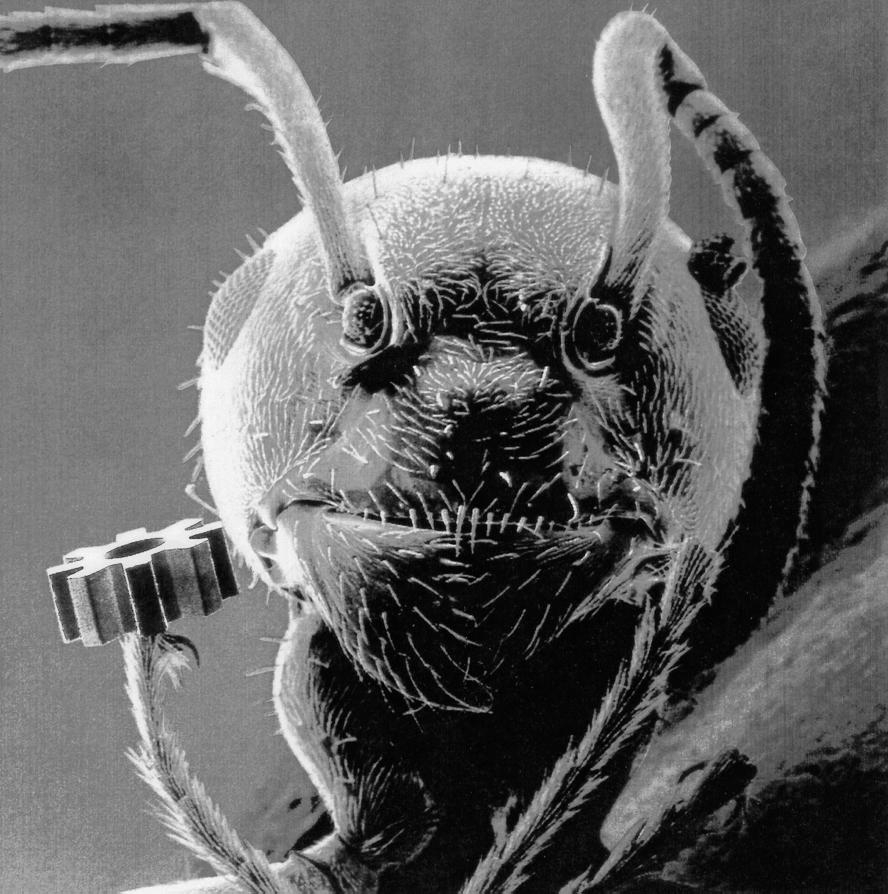
MEMSforairbags,whichfirstappearedinthe1980s,consistofanintegratedsystem onasiliconwaferthatisjustafewmillimetreslong.ThisisshowninFig.1.6.The heartofthechipismadeoftwocombs,onefixedandtheothermobile;thecapacitance ofthesecombsvariesundertheeffectofanimpact.AswewillseeinChapter2,the miniaturizationofthecapacitorelementallowsthecreationofahighlysensitiveand rapiddetector.TheindustrialsuccessofMEMSforairbagisnotsolelyduetothe improvementinsensorresponseandsensitivity,butalsototheabilitytointegrate detection,informationanalysis,andsignalprocessingallononesinglechip.Justas withintegratedcircuits,thischipcanbereproducedbythemillion.Thecost,whichis criticalinthefieldofautomobilemanufacturing,becomesveryadvantageouscompared totraditionalsystems.Forthisreason,allmodernautomobilesnowuseMEMSfor theirairbags,andtensofmillionsofthesedevicesareproducedeachyear.
ThehistoryofMEMSisinteresting.Theyear1959isoftenconsideredtobethe beginningofthehistoryofmicro-andnanotechnology.InDecemberofthatyear,
Fig.1.6: A-SEMimageofapartofaMEMS-accelerometerforairbag(ReprintedfromRef. [18],withpermissionfromIOPPublishing,Ltd,Copyright2022);Bprincipleoffunctioning oftheaccelerometer.
avisionaryspeechwasgivenbyRichardP.FeynmanduringtheAmericanPhysical Society(APS)meetingatCaltech.Thisspeechwasentitled‘Thereisplentyofroom atthebottom’[19].Anearlypartofthespeechisasfollows:
Iwouldliketodescribeafield,inwhichlittlehasbeendone,butinwhichanenormous amountcanbedoneinprinciple.Thisfieldisnotquitethesameastheothersinthatitwill nottellusmuchoffundamentalphysics(inthesenseof‘Whatarethestrangeparticles?’) butitismorelikesolid-statephysicsinthesensethatitmighttellusmuchofgreatinterest aboutthestrangephenomenathatoccurincomplexsituations.Furthermore,apointthatis mostimportantisthatitwouldhaveanenormousnumberoftechnicalapplications.
Feynmansawnophysicalreasonwhythe50volumesof EncyclopediaBritannica could notbeinscribedontheheadofaneedle.Oneletterwouldonlyneedtoconsistofless thanadozenorsomolecules.Confrontedwiththedifficultyofworkingatmicrometricscales,hesuggestedthatwe‘trainantshowtoteachmites’howtoconstruct miniaturizedmachines’.
Howmanytimeswhenyouareworkingonsomethingfrustratinglytinylikeyourwife’swrist watch,haveyousaidtoyourself,‘IfIcouldonlytrainananttodothis!’WhatIwould liketosuggestisthepossibilityoftrainingananttotrainamitetodothis.Whatarethe possibilitiesofsmallbutmovablemachines?Theymayormaynotbeuseful,buttheysurely wouldbefuntomake.
Thesesuggestionsorpredictionsdidnotremainjustafantasy;sincethreedecades later,in1990,theword‘IBM’wasspelledoutwith35xenonatoms[20](seeFig.1.7).
1.7: IBMspelledoutwith35xenon atoms,depositedonacold(4K) Nickel(110)surface.Theatomswere transferredfromthesharpScanningTunnellingMicroscope(STM) tipandimagedwiththeSTM[20]. Thisimagereceivedalargeecho.
ThefirstMEMSdeviceswerecreatedtwodecadesafterFeynman’sspeech[21].The firstmicrobeamwasreportedin1982(Fig.1.8A),andthefirstmicrospringin1988. Thefirstmicromotorwascreatedin1988[22,23](Fig.1.8B)8.Itconsistedofanelectrostaticmotor,wheretherotatingelectricfieldwasgeneratedbyelectrodesevaporated ontopolysilicon.Onemajordifficultywasthatstiction(thecombinedphenomenaof adhesionandfriction),whichtendedtoblocktherotorwasexacerbatedbyminiaturization.Thesolutiontothisproblemconsistedofreducingthesurfaceareaofthe rotor/substratecontact,butthismademicrofabricationofthismachinemoredifficult.
Fig.1.8: (A)Firstmicrobeam(1982).(B)Firstmicromotor,madeatUCBerkeleybyTai andMullerin1989.Thismotorhasbeenplacednexttoahumanhairwhosediameterison theorderof200 µm.(CourtesyofProfessorRichardS.Muller,BerkeleySensor&Actuator Center,UniversityofCalifornia,Berkeley).
Otherexamplesareamicrogripper,ahot-wirerake[21],andanastonishingmicroguitar,showninChapter7,withnanostrings30nminsize,vibratingatMHzfrequencies.9 Inaddition,someunsubstantiatedconceptswereproposed:forinstance,aMEMSconsistingofinclinablemirrorsthatpermitcommunicationbetweenthegroundandan airbornemicro-engine.10 Theprojectfailed,buttheconceptwasappealing.Notallof theseobjectswerepractical,butallofthemstimulatedtheimagination.
Today,theMEMSmarketisestimatedtobeworthbetweenUS10andUS13billions, dependingontheagencies.ExamplesofcompaniesareARMHoldings.Bosch,Cisco SystemsInc.,InvenSense,KnowlesElectronics,MediaTekInc.MicrochipTechnology Inc.,SamsungDevelopers,STMicroelectronics,and,TexasInstruments.MEMSproductionincludesavarietyofproductslikeMEMSforairbags,microgyroscopesfor mobilephones,micromirrorsfordigitalprojectors(Fig.1.9),pressuresensors,tomen-
8WewillseeinChapter2thatthismicromotorcancomprisethebaseelementofamicroturbine thatconvertschemicalenergytoelectricalenergy.Itisalsointerestingtonotethatmicrogears, fabricatedusingMEMStechnology,areoftenusedtodayinclockmaking.
9Theguitar,10 µmlong,withsix30nmwidecords,willbeshowninChapter7.Itwasrealized atCornell,in1997,inthegroupledbyProfCraighead.
10Thisconcernedaproject,writtenbyKristoferS.J.Pister,JoeKahn,andBernhardBoser,the UniversityofCalifornia,Berkeley,in1997,whoseobjectivewastobuildwirelesssensornodeswitha volumeofonecubicmillimeter.
Thebirthofmicrofluidics 9
Fig.1.9: (A)OpticalMEMS(MOEMS)madebyTexasInstrument,usedindigitalprojectors. (B)Anarrayofmicro-mirrorsusedinavideo-projector.Thesizeofeachmirroris10 µm [24](CreativeCommonsAttribution4.0UnportedLicense).
tionafew.Theapplicationsareimpressive,butthereisstillroomatthebottom.For instance,noMEMSiscapableofflyingandact,forinstance,likeamosquito.Creating aMEMS-mosquiitowouldnecessitatedevelopinganextremelylightweightandpowerfulenergysource,thatdoesnotexistyet,andintegratinganextraordinarilyefficient motor,alongwithultraminiaturizedmicro-pumps.Allthis,today,looksimpossible.
1.4Thebirthofmicrofluidics
Wenowconcentrateonmicrofluidics.Asinthecaseinmanyfields,thebirthofmicrofluidics,definedas‘thescienceofmanipulationoffluidsatthemicroscale’,assaid above,hasbeenprecededbyprecursorsandevenprecursorsofprecursors.Peoplehave succeeded,inmanycircumstances,inmanipulatingfluidsatthemicrometricscale,in acontrolledmanner,withonlytheirhands.Todothis,theyexploitedhydrodynamical lawsthatnaturallyprovideacontrolofthemicrometricscale.Anexampleispainting. Paintersdepositmicrometriclayersonwalls,whosethicknessiscontrolledbythespeed ofthebrush.Anotherexampleissoapbubbles.Thefilms,stabilizedbysurfactants, aresub-micrometric.Theseexamplesshowthatwithoutmicrotechnologicaltoolbox, themicrometricscale,inanumberofcases,canbecontrolled.
Ofmuchgreatertechnologicalsignificanceisadeviceproducingsubmillimetricdroplets. Itwasinventedin1964byR.G.Sweet[25,26](seeFig.1.10).
SketchofthesystemusedbyR.G. Sweet[25].
Theinvention,withothers,playedaninstrumentalroleinthefieldofink-jetprinting, amajorapplicationofmicrofluidics.Here,dropletswereemittedanddepositedona movingsheet.Akeypointwastheelectrostaticcontrol,whichallowedlargequantities ofnanoliterdropletstobeproduced,inareproduciblemanner,openinganavenue towardsthefabricationofink-jetprinters.
1.11: Firstmicrofluidicsystem(1975)[28]:aminiaturized gaschromatographer,including aninjector,a1.5mlongmicrochannelandathermaldetector.(ReprintedwiththepermissionofIEEE,copyright2022.)
Inthe1970s,silicon-basedMEMStechnologywaswelladvanced,manycleanrooms wereavailable,andtherewerenodifficultyinetchinggroovesonsiliconwafersto createmicrochannels.Inthiscontext,thefirstmicrofluidicdevice,inventedbyS.C. Terry[27],appearedonthescenein1975.UnlikeSweet’sinvention,themanufacturing anddesignofthedeviceprefiguredthesilicon-basedmicrofluidicdevicesthatwould laterdevelop,givingbirthtomicrofluidics.ThedevicemadebyTerry[27,28]wasa miniaturizedgaschromatographer.ItisshowninFig.1.11.
Terry’sdevicecirculatedgasthrougha1.5mmicrochanneletchedinasiliconwafer, bondedtoaglassplate.Thesystemincludedaminiaturizedelectromagneticinjector andathermaldetector.Separationsofgaseoushydrocarbonmixtureswereperformed inlessthan10s,withoutcompromisingtheefficiency,whichwasanimpressivefeat atthattime.
Nonetheless,althoughthedevicewasindustrializedseveralyearslater,thetechnologicaljumpremainedisolated,because,duringtheseyears,theseparation-science communitywasnotreadytoadoptsilicontechnology[29].Itwasonlyafter1990that theadvantagesofminiaturizationwerethrustintothespotlight,foritsapplicationto electrokineticliquidchromatography[30–32].
Aseminalpaperappearedin1990[30].Byreasoningonscalinglaws,A.Manzet al.arguedthatminiaturizationenablesthecreationofperformingseparationsystems, combiningportability,lowcost,andhighspeed,withoutcompromisingtheefficiency.11 WewilldescribethesesystemsinChapter6.Thepaperintroducedanewacronym,
11Theconclusionofthepaperwas:‘Abasictheoryofhydrodynamicsanddiffusionindicatesfaster andmoreefficientchromatographicseparations,fasterelectrophoreticseparationsandshortertransporttimesforaminiaturizedTAS.Theconsumptionofcarrier,reagentormobilephaseisdramaticallysmaller.Amulti-channeldevicewouldallowthesimultaneousperformanceofalargenumber ofmeasurements(underthesameconditions).’
1.12: Firstelectrokineticseparationmicrosystem(1992).Overalldlmensionsare 14.8cmx3.9cmx1cm.(Reprintedrom Ref.[31],withpermissionofAmericalChemicalSociety.Copyright2022.)
µTAS,whichstoodforMicroTotalAnalysisSystem.Thetermlooksawkward.What doesitmean?A‘TotalAnalysisSystem’(TAS)referstoasysteminwhichanalyticalinstrumentsaretransportedonacart,toperformthetotalanalysisofasample (sampling,sampletransport,chemicalreactions,detection)inthefield.Thanksto miniaturization,nocartwasneeded,andtheequivalentsystemwascalled µTAS.The ideasweresubstantiatedtwoyearslater,withtherealizationofthefirstelectrokinetic separationmicrosystem[30].12 Thisdemonstratedperformancesinlinewithexpectations,i.e.highspeedofseparation,andexcellentefficiency,transportability,andlow cost.Microfluidicswasborn.
Later,allsortsofmicrofluidicsystemswerefabricated:electrophoreticseparationassays[33,34],electro-osmoticpumps[35],diffusiveseparationsystems[36],micromixers[37–42],DNAamplificationsystems[43–49],cytometers[50,51],DNAseparation assays[98–102],centrifugalmicrofluidics(seereview[103])andchemicalmicroreactors[52–56],tociteafewexamples.Anumberoftheseinventionsweretoplayan importantrole,adecadelater,intherampingupofthemicrofluidicmarket.
1.13: Coveroftheproceedingsofthefirst µTAS conferenceorganizedby A.vandenBergand P.Bergveldin1994,in Enschede(theNetherlands).(Reproduced withpermissionfromthe ChemicalandBiological MicrosystemsSociety (CBMS),copyright2022 CBMS.)
Upto1994,theyoungmicrofluidiccommunitygatheredindifferentmeetings,inparticularinMEMSconferences(launchedsixyearsbefore,in1988),inwhichoneor twosessionsweredevotedtomicrofluidics.Thesituationwasnotoptimal.Controlling
12Infact,thedevicewasmanufacturedin1988.
fluidflowsinmicrodevicesrequireddiscussionofsubtlehydrodynamicandphysicochemicalphenomena,andthesewerefarfromthefocusofthesemeetings.Therefore,a desiretoorganizespecializedseminarsemerged,inordertofocusonthesephenomena, and,inthemeantime,takethespecifictechnologicalcontextintoaccount,mostoften overlookedintraditionalacademicmeetings.Thefirst µTASconferencewasorganized byA.vandenBergandP.Bergveldin1994,inEnschede(theNetherlands).Thecover oftheproceedingsisshowninFig.1.13.Atotalof160participantsattended.Today, µTASconferencesbringtogether1,500participants.13
Intheseearlydays,a‘paradigm’,i.e.asetofconceptsandpracticesthatdefineascientificdisciplineatanyparticularperiodoftime’,or,moresimply,‘whatthemembers ofascientificcommunity,andtheyalone,share’[57],emerged.Itwasthoughtthatthe objectiveofmicrofluidicswastocreatebasicmicrofluidicfunctions,or‘bricks’,and assemblethem,inawaysimilartomicroelectronics,soastogeneratecomplexfunctionalities,thatcouldrespondtounmetneedsinbiologyandchemistry.Thenotionof lab-on-a-chipwasfrequentlyputforward,andstunningcartoonsdesignedtoillustrate theconcept,suchasthoseofFig.1.1414,appearedinmanybroad-readership(forinstanceRef.[58]),augmentingthevisibilityofthefield.Butwhydidthecommunity notfabricatecomplexmicrofluidicsystems,comparabletomicroelectronicprocessors, astheyenvisioned?Onebottleneckwasvalveintegration.Itappearedimpossible,at thattime,withsilicon,plasticsorglass,tointegratemorethanafewvalvesona device.Therewasnochancetocompetewiththemillionsoftransistorsintegrated,at thattime,oncentralprocessingunits(CPUs).
Inthesameperiod,hydrodynamicexperimentsrevealedunexpectedphenomena;for instance,largeslippages,whichapparentlycontradictedtheno-slipdogmaofhydrodynamics[59,60].Inthemeantime,microfluidictechnologyrevealedthemechanical behaviorofsingleDNAmolecules.TheexperimentwasperformedbyChuetal.[61] in1993,incross-flowmicrochannels.Thisworklaiddownthefoundationsofanew domain:thestudyofsinglemolecules.Italsoshowedthatmicrofluidicscouldprovide newtoolsforinvestigatingfundamentalquestions.Aroundthattime,anumberof fundamentalcontributionsallowedthephysicalroleoftheconfinementtobeclarified. Thisconcerned,forinstance,electrohydrodynamics,electrowetting,chaoticmixing, polymerdynamics,gasflows,orfluidinterfaces.Thelistislongandwewillreturnto thesesubjectslater.Moleculardynamicssimulations,ontheotherhand,enlightened
13Thesecondmeeting, µTAS96,washeldinBaselwith275participants.Thefirsttwomeetingswere heldasinformalworkshops.Bythetimeofthethirdworkshop, µTAS1998(420participants),held inBanff,theworkshophadbecomeaworldwideconference.Thenumberofparticipantscontinued toincreasein µTAS2000(about500participants)heldinEnschedeand µTAS2001(about700 participants)heldinMonterey.Thenumberofsubmittedpapersalsodramaticallyincreasedinthis periodfrom130in1998,to230in2000,tonearly400in2001.From2001, µTASbecameanannual symposium(textofpresentationof µTAS2002,heldinNara(Japan),andwrittenbyYoshinobu BabaandShuichiShoji).
14Fig.1.14(A)isstunning,butitismisleadinginthesensethat,inpractice,thefunctionalities shownonthefigurearemuchmoredifficulttointegratethansuggested.Perhapsinspiredbythis unrealisticillustration,orunderstandingtheanalogybetweenmicroelectronicsandmicrofluidicsina tooliteralsense,severalcompanieswastedmuchtimeandenergydevelopingcomplexlab-on-a-chip thathadnochanceofworking
Fig.1.14: (A)Cartoonpublishedin1998[58],showinganimaginarymicrofluidicdeviceintegratingseveralfunctionalities:electrophoreticseparation,heating,driving,mixing,extraction,andpolymerasechainreaction(PCR)amplification.(B)ImageelaboratedbyCaliper, around2000,thatillustrateswellthelab-on-a-chipconcept.
anumberofphenomena,sometimesinconflictwiththeexperiment.Thisconcerned, forinstance,slippage,nanobubbledynamics,orelectrowetting.Again,wewillreturn tothesesubjectslater.
Bytheturnofthetwenty-firstcentury,manymicrofluidicdeviceswerecreatedinthe labs,somepatented(onehundredorso)awaitingcommercialdevelopments,many not.Before2000,theglobalmicrofluidicmarketwasanano-market,worthlessthan US$100M.15 Anumberofmicrofluidicproducts,althoughelegant,didnotmeetany market.Thiswasthecaseofthemicrofluidicfountainpen[62].Othersdidnotfunction withsufficientreliability:thiswasthecaseoftheglucosewatch,dedicatedtomonitor glucosebysamplinginterstitialfluids.Itwilltakeyearsbeforethisproductfindsits placeinthemarket[63].Otherinventionsmetconsiderablesuccess:onedeveloped byi-Stat(createdin1983),ofextremelysimpleconstruction,dedicatedtoglucose measurements.Inthe1990s,i-Statcompanyshippedseveralmillioncartridgesevery yeartohospitals.Twocommercialproducts,whoseproductionvolumeswerenotas important,butwhichpromisedaninterestingfuture,mustbementioned:theBioanalyzer,dedicatedtoDNAseparation,madebyCaliperAgilent,andtheSmartCycler R System,aPointofCare(POC)molecularsystem,developedbyCepheid(founded in1996).Thetwosystemsmarkedtheentryofmicrofluidicsinmolecularbiology. Cepheidwouldbecome,yearslater,amajorplayerinthisfield.Inthemeantime, severalmicrofluidicfoundries,suchasMicronit(foundedin1999),orChipChop,and lateron,Dolomite(2005)formicrofabrication,andFluigent(2006)andElvesys(2011) forinstrumentation,werecreated.Theyplayedanimportantroleinthedevelopment ofmicrofluidics.
15Althoughinkjetprintingisamicrofluidicsystem,byconvention,itisnotcountedaspartofthis market.
Whofirstusedthewordmicrofluidics?
Before1993,thewordmicrofluidics’wasessentiallyabsentfromthevocabularyof themicrosystemcommunityItdidnotappearanywhereinthe857pagesofthe Microsystemtechnology90Proceedings[67],animportantconferenceoftheyoung MEMScommunity.Instead,thewords‘microliquid-handling’,‘micro-hydraulics’, ‘microfluid’,withorwithouthyphen,ormicro-liquidflows’werepreferred[68].‘Microfluidics’wasalsoabsentfromTerry’s[28],andManz’s[30,31]papers,publishedin 1979,1990,and1992.Whywasthisthecase?Wemayhypothesizethatresearchers ofthattime,involvedinwhatwenowcall‘microfluidics’,werereluctanttouseaword thatlookedesoteric.Thesituationseemedtochangein1993,afterthepublication, byP.Gravesen,ofasurveytitled‘Microfluidics:AReview’[65].Thepaperacquireda significantvisibility.Althoughnoetymologicstudyhasbeendone,andprobablywill neverbedone,onemayhypothesizethatthereviewstronglycontributedto,ifnot initiated,thespreadoftheword.Lateron,althoughinvisibleintheMicroTas94Proceedings,theword‘microfluidics’increasinglyappearedintheliterature.Theword wassuitablesinceitrepresented,aspointedoutbyR.Zengerle[66],a‘headline’coveringalltypesofactionsinvolvingfluids,andperformedinmicrosystems.After1997, itfrequentlyappearedandeventuallyacquiredaprominentplaceinthelanguage. Finally,thecommunityworkingonfluidmanipulationsatthemicroscaleadoptedit togiveanametotheirfield.
1.5Theadventofsofttechnology
Animportantstepwastakenin1998,withthedevelopment,byG.Whitesides,of softtechnology[69–71].16 Withsofttechnology,deviceswerenolongermadeinglass orsilicon,butinsoftmaterials.Fromatechnologicalperspective,thisrepresenteda considerableshift.Twoimages,extractedfrom[69]and[70],areshowninFig.1.15.
Fig.1.15: (A)ScanningelectronmicrographsofaPDMShoneycombstructure,createdby moldingthepolymeragainstaphotoresistmould(ReprintedfromRef.[69]withpermission fromWileyandSons,copyright2022WileyandSons).(B)Double-Tsectionofthenetworkof channels.TheroughnessinthesidewallsofthePDMSchannelsarisesfromthelimitedmask resolution(ReprintedwithpermissionfromRef.[70],copyright2022AmericanChemical Society.).
16Whitesides’paperswerepreceded,in1997,bytwopioneeringworks[72,73].
Theadventofsofttechnology 15
Figure1.15(A)istakenfromRef.[69].Thepaperexplainedtheconceptofsofttechnology,anditstwomainfacets,microprintingandmicromoulding,whichwewilldiscuss inChapter7.
Figure1.15(B)showsmicrochannelsmadeinPolyDiMethylSiloxane(PDMS)[70].We willhearmuchaboutPDMSinthebook.Itisalmostamiraculousmaterial.Ithas propertiesthatnoothermaterialpossesses:deformable,transparentinthevisible range,insulating,hydrophobic,stickingtoglassinareversiblemanner.Wewillsee,in Chapter7,thatallofthesepropertiesmakesoftlithographypossible.InFig.1.15(B), theaqueoussampleisintroducedinthedoubleT,thendrivenbyelectroosmotic forcesintoalongmicrochannel(notshown),alongwhichelectrokineticseparationis performed,inamannersimilartoManz’swork[31].Thewallsarerough,duetothelow maskresolution.Theauthorsachievedionicseparationinthesystem,witharesolution andaspeedcomparabletosilicondevices.Thepaperthussuggested,that,eventhough surfacechemistryisnotascontrolledasinglassorsilicon,electrokineticseparation, themajorapplicationofmicrofluidicsatthattime,isfeasible.Forchromatographic experts,thiswasquiteasurprise.
Nonetheless,themessagereceivedbymanyresearcherswasnotaboutseparation.It wasthatPDMSmicrodeviceswereeasytocreate.17 Oncethemouldwasfabricated, therestofthetechnologicalprocesscouldbemadeoutsideacleanroom,without specializedskills.Amasterstudentcouldlearnitinoneday.Thesimplificationofthe technologicalprocessgaverisetoasurgeofactivity.Manylaboratories,interestedin microfluidics,butwithlimitedaccesstocleanrooms,cametothefieldandstarted investigatingnewdirections.Onecouldcomparethisperiodtothetransitionfrom centralizedinformaticstolaptopcomputing.
Whydidallthecommunitynotrushouttousesofttechnology,abandoningsilicon? Tworeasonscanbeprovided:thefirstisthatPDMSsurfacesarenotstable,meaning thatperformingaccurateseparationswithsuchamaterialwasimpossible.Forthe communityofthattime,composed,mostly,ofanalyticalchemists,thisrepresenteda seriouslimitation.Secondly,PDMSdevicescannotbeproducedinlargequantities. Scalingupisnotpossible,whilewithsiliconitis.Thesetwoargumentsledmostof themicrofluidiccommunityofthattimetokeepworkingwithsiliconandglass.The argumentswerenotunreasonable.Today,halfofthehundredsofmillionsofdevices producedinthemicrofluidicmarketaremadewithglassandsilicon.
Mostresearchersusingsofttechnologywerethusnewcomers.Inthesameperiod,pressingneedsappeared:examplesareDNAsequencing,cellsorting,moleculescreening, singlecellanalysis,andproteomics.Asmentionedearlierfortheparticularcaseof DNAsequencing,alltheseapplicationsconveyedbignumbers:fivebillioncellstosort forisolating1-10circulartumorcells(CTC)[76],hundredofthousandsofcompounds fordrugdiscovery[80],millionsoffluidmanipulationsforperforminggenesequencing[75].Howsomanyexperimentscouldbecarriedoutrapidlyandinparallel,while consuminglittlereagent[74]?Thiswasthenewchallengefacedbymicrofluidics.The
17ThediscoveryofSU8,byIBM,inthe1990s,allowedthickmouldstobemadeinonephotolithographicstep,facilitatingthefabricationofPDMSdevices.
challengewasnotonlyintellectual.Today,theaforementioneddomainsrepresentthe largestshareofthemicrofluidicmarket.18
Inthiscontext,asurgeofinnovationsemerged.Onelandmarkwasthedemonstration, in2002,that,byexploitingthedeformabilityofPDMS[77],thousandsofvalvescould beintegratedonthesamedevice[78].ThisisshowninFig.1.16.Thevalveproblem, raisedinthepreviousdecade,seemedtobesolved.Thetechnologygavebirthtoa company,Fluidigm,whosevaluationwouldsoonreachUS$1bn.WithCepheidand Fluidigm,twomicrofluidicunicornswerebornintheyears2000-2010.19
1.16: Thedevice,whosechannelsarevisualizedwithdyes,contains2056microvalves. Thesystemperformsdistinctassaysin256 nlsubreactionchambers.Eachofthemis individuallyaddressed,usingamultiplexed valvesystem,.Withit,only20valvesare neededtocontroltheassay.(Reprinted from[78],withpermissionfromtheAmericanAssociationfortheAdvancementofScience.Copyright2022.)
ThedeviceshowninFig.1.16contains2,056microvalves.Eachofthe256chambers onthechipisindividuallyaddressed.Amultiplexerallowsforreducingthenumberof connections,from N (Nbeingthenumberofchambers)to2 log2N [78].Itisimpossible torealizesuchasystemwithglassorsilicon.Formicrofluidics,anewperiodopened.
1.6Diversificationofthetechnologyandbroadeningofthe applications
Intheyears2000-08,thankstosoftlithography,themicrofluidiccommunityhadan easieraccesstotechnology.Thenumberofapplications,includingthoseinvolvinglarge numbers,increased,andgrowingpublicsupportraisedmomentuminuniversities.In suchconditions,themicrofluidiccommunitygrewsubstantially,reachingthousands ofresearchersworldwide.Thestimulatingatmosphereofthattimewasperceptiblein the µTASconferences.
Droplet-basedmicrofluidicsappearedintheperiod2000-2002.Wewillpresentthe technologyinChapter4.Atfirstglance,producingmicrodropletsundercontroldidnot appearnew.Forinstance,ink-jetprintersandfluorescentactivesorters(FACS)already
18BeforetheadventoftheCOVID-19pandemic.
19Ataboutthesametime,Theranos,whichpromisedtoperformahundreddifferenttestswitha singledropofblood,reachedmuchhighervaluations.Tenyearslater,thecompanycollapsed.Because oftheabsenceofpeer-reviewedpublicationsissuedbythecompany,linksbetweenthemicrofluidic communityandthiscompanywereinexistent.
